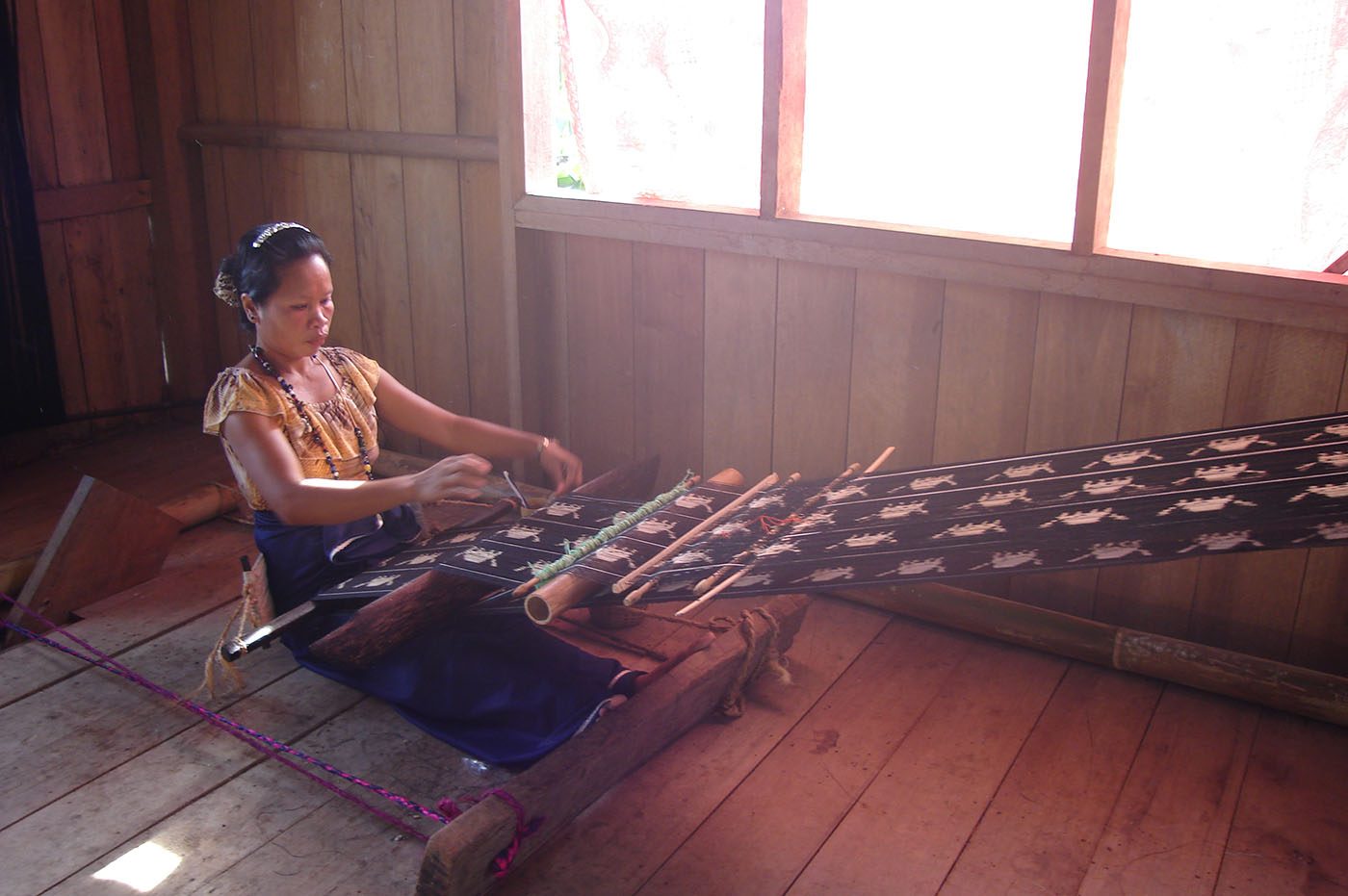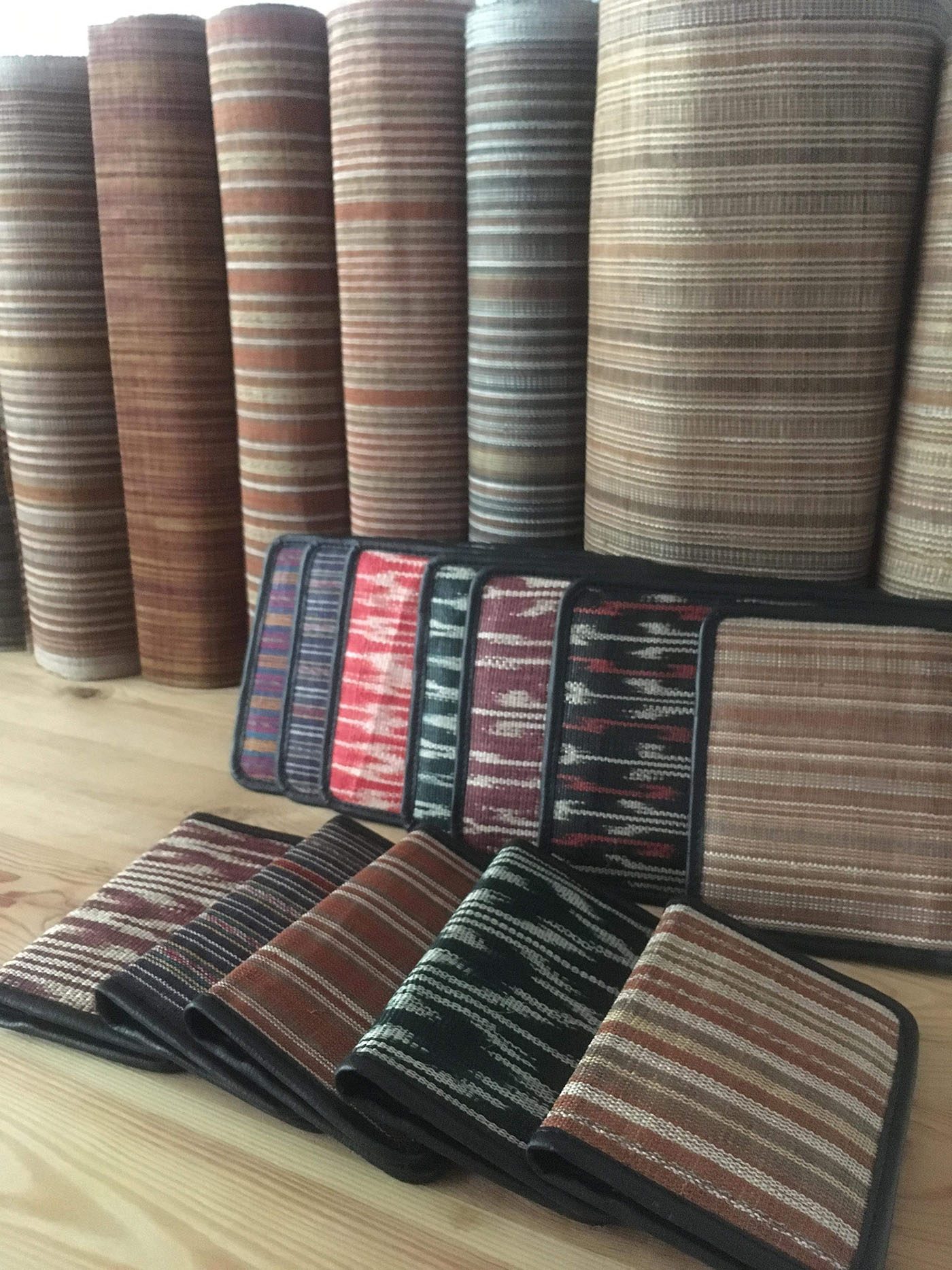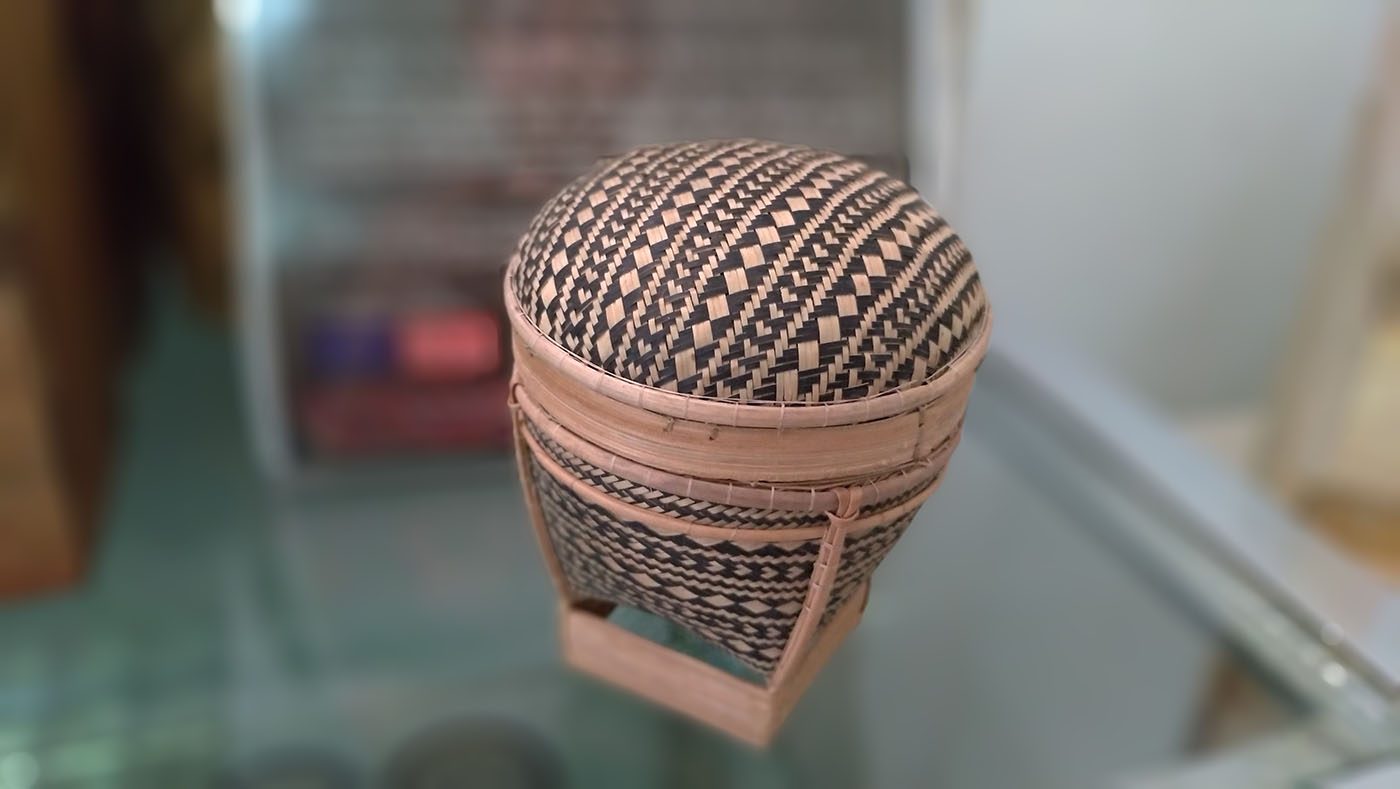SUMMARY
This is AI generated summarization, which may have errors. For context, always refer to the full article.

MANILA, Philippines – It takes mental precision to create intricate hand-woven patterns. To consistently do that is amazing.
This observation from Joy Ann Chua of Custom Made Crafts Center – the marketing arm of Non-Timber Forest Products-Exchange Program (NTFP-EP) – couldn’t be more accurate.
NTFP-EP is a non-profit organization that supports forest-based communities, including indigenous peoples, in the Philippines through community-based enterprise development.
She said, “If I were the one doing that without an Excel program, I would have been crazy!”
Indeed, from hinabol of Higaonons in Bukidnon, tingkep of Pala’wan in Palawan, and T’nalak of T’boli in South Cotabato, among other hand-woven crafts in the Philippines come with detailed designs that depict mastery of skill and patience with the unhurried way of life.
However with modern challenges, these artisanal traditions may disappear.
School of Living Traditions
That’s where the National Commission for Culture and the Arts’ (NCCA) School of Living Traditions (SLT) comes in to ensure transmission of indigenous knowledge, skills and practices to the young generation.
Through SLT, a living cultural master teaches the skills and techniques of doing a traditional art or craft. They teach it to community members in an informal setting with practical demonstrations.

According to NCCA, this is in response to the call of United Nations Educational, Scientific and Cultural Organization (UNESCO) for the preservation of cultural heritage in a living form, besides recording it in tangible form and conserving it in archives.
Enhanced SLT
NCCA’s SLT program is enhanced from 3 to 4 months to 5 years in partnership with NTFP-EP.
The first 3 years is for transmission of knowledge and skills. The last two are for product development and marketing to ensure a sustainable livelihood.
“NCCA gave a name to what we have been doing, which is a programmatic approach to preserving culture through a sustainable approach,” said NTFP-EP Philippines’ head for enhanced SLT program Beng Camba.
She added that long before its partnership with NCCA, it has been working with 51 community-based enterprise partners in 5 main landscapes – Luzon, South Sierra Madre, Palawan, Visayas, and Mindanao.
NCCA learned about it when they sought assistance in sending master weavers abroad to participate in the International Folk Art Market.
First 3 batches
Currently, there are 28 provinces in the country that are part of SLT. Six of them are under the NTFP-EP partner areas.
The first batch – Ifugao, Benguet, Aklan, Iloilo, Bohol, Negros Occidental, Agusan del Sur, Basilan, Davao Occidental and South Cotabato – are now in their third year. The second is comprised of Abra, Bulacan, Kalinga, Mountain Province, Antique Capiz, Palawan, Davao City, Davao del Norte, Zamboanga del Sur and Bukidnon. The third, which includes Guimaras, Nueva Vizcaya, Rizal, Davao del Sur, Davao Oriental and North Cotabato, are in its first year.
According to Camba, the cultural masters get to decide on what to teach, the pacing, and everything.
“Our role then is to guide them in creating the curriculum,” she said.
Sustainable practices
Although being challenged by the changing demands of our time, indigenous people’s (IPs) sustainable practices have been part of their culture with their respect for sacred grounds and harvesting rules.
NTFP-EP, through CMCC, helps reinforced sustainable practices by buying their products at fair trade prices and finding the right market.
The latter means developing them into practical items such as notebook jacket, passport holder, bag accents, and quality food products like wine and honey.
We make sure that when we develop products, we use various raw materials from different producers, said Camba.
This ensures continuous production for communities and not just a few master weavers, and therefore instil in community members the need to be mindful of their harvesting habits.

However, they learned that exporting is not for them despite the demand for traditional products.
“Exporting exhaust their raw materials and them too as all they did was weave, weave, and weave,” Camba said. Hence, it also robs them of time for their normal routine including planting.
Women empowerment
With continuous production comes a sustainable livelihood, especially for women.
In Bukidnon, the weaving women provide cash for their family since the farm that men tend to can provide only food for the table.
Now, males also earn additional income by selling abaca fiber.
In Lake Sebu in South Cotabato, a malong weaver is now the breadwinner.
According to Camba, “she was able to buy a piece of farmland and recently a carabao for her partner.”
Some drew faces with colors on the cheeks and lips to show they can now buy beauty products like powder and lipstick.
The Muslim widows called Al Jamelah (Beautiful Women) who, according to Camba, are considered utterly poor, can now buy their own malong from their weaving income.
For Camba the project’s impact cannot be measured by monetary gains alone, but how it empowered them.
They now use their language when riding a jeepney or eating downtown. And speak before a crowd of non-IPs.
Truly, they have become confident of who they are. – Rappler.com
Add a comment
How does this make you feel?
There are no comments yet. Add your comment to start the conversation.